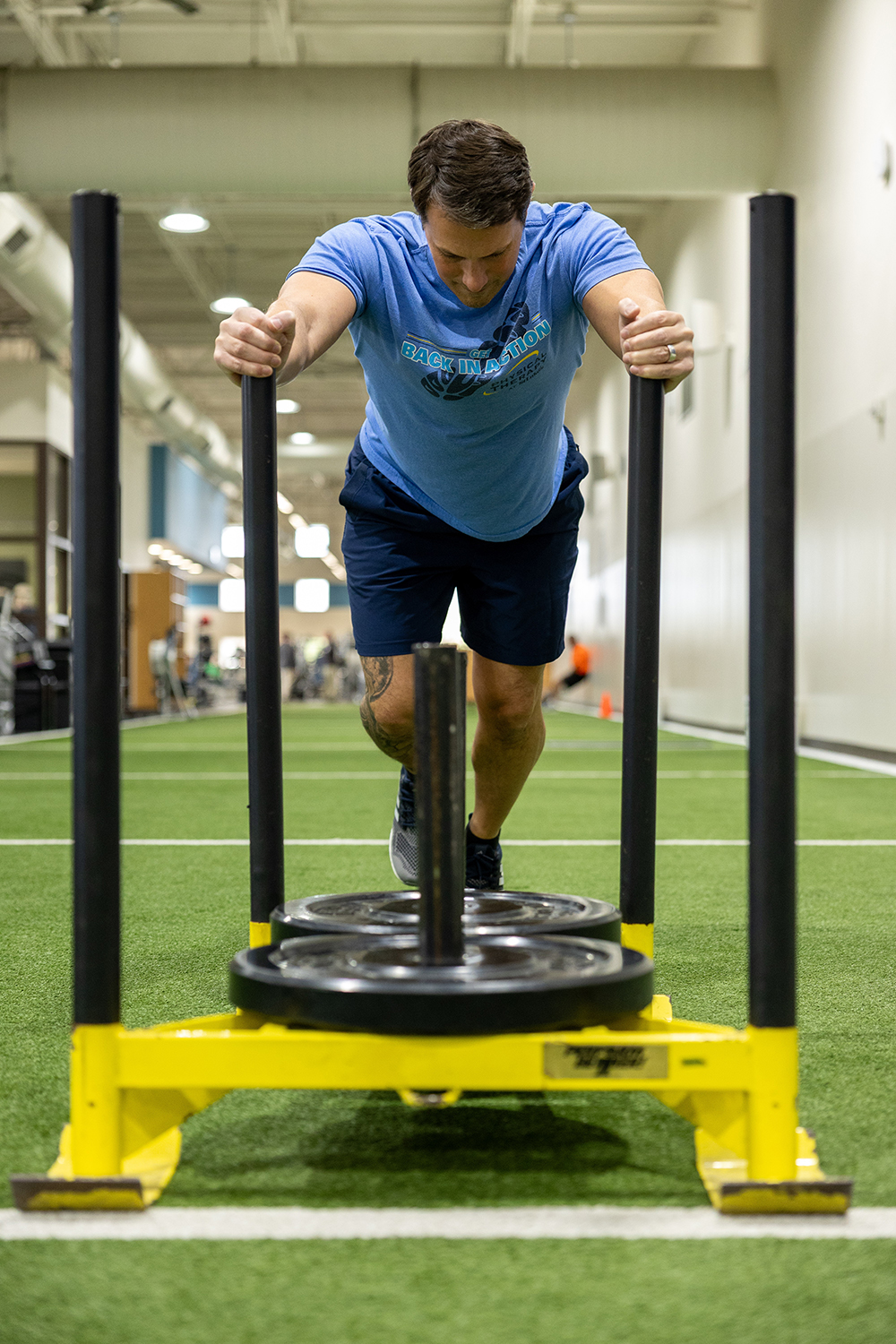The Holidays May Stretch on Forever but You Don’t Need To…
November 18, 2025

The holiday season—stretching from Thanksgiving through New Year’s—is known for family gatherings, festive meals and an abundance of indulgent foods. While these traditions bring comfort and joy, they can also take a serious toll on your physical health and fitness progress. The combination of high-calorie foods, disrupted routines and reduced activity levels can quickly derail months of consistent effort. Understanding how holiday eating habits affect your body can help you navigate the season with balance—and stay on track toward your goals.
The Physical Cost of Overindulgence
During the holidays, it’s easy to consume thousands of extra calories in a single day. Traditional holiday meals are typically loaded with fats, sugars and refined carbohydrates. These excess calories can lead to fat gain, especially when paired with reduced physical activity. Even small increases—two or three pounds over the holidays—can add up over time if they’re not reversed afterward.
High sugar and refined carbohydrate intake cause spikes in blood glucose, followed by crashes that leave you tired and craving more food. Elevated sodium levels from processed or rich foods can lead to water retention, bloating and increased blood pressure. Meanwhile, alcohol adds “empty” calories, slows muscle recovery and interferes with sleep—further reducing energy and motivation to train.
“It’s not just about the calories—it’s about how consistently overindulgence disrupts your body’s rhythm, recovery and readiness to perform,” says Elliot Beadle, RDN, LDN, sports dietitian specialist, St. Luke’s Sports Medicine. “When you eat heavy, sugary or processed foods day after day, your body doesn’t just store extra fat—it struggles to function efficiently. Energy levels fluctuate, sleep quality declines and inflammation increases, all of which impact how you move, lift and recover. For athletes and active adults, that means slower reaction times, decreased endurance and muscles that don’t rebound as quickly after training. Even if you’re still getting workouts in, your performance can drop simply because your body isn’t fueled or rested properly.”
For athletes and fitness enthusiasts, these changes can affect performance. A heavier, less hydrated body has to work harder, and excess inflammation from poor nutrition can slow recovery and increase injury risk.
How Holiday Habits Disrupt Training and Recovery
- Energy Drain: Overeating dense, high-fat foods makes the body work overtime to digest, which can lead to fatigue and sluggishness. That means less energy for workouts, lower intensity during training and decreased calorie burn.
- Interrupted Routines: Travel, family events, and irregular sleep patterns often disrupt consistent training schedules. Even a week away from regular workouts can reduce endurance and strength.
- Inflammation and Muscle Recovery: Diets high in sugar, alcohol and processed foods increase inflammation, making it harder for the body to repair muscles and recover from exercise.
- Weight and Composition Changes: Even a modest caloric surplus can shift body composition—reducing lean mass if protein intake and resistance training drop while fat intake increases.
Staying on Track: Smart Holiday Fitness Strategies
- Prioritize protein and hydration.
At every meal, make protein your focus—turkey, chicken, fish or plant-based sources—to support muscle repair and fullness. Drink plenty of water before and during gatherings to reduce overeating and combat sodium-related bloating. - Move every day.
You don’t need full gym sessions to stay active. Try a quick bodyweight circuit in the morning, a post-dinner walk or games that get the family moving. Movement helps regulate blood sugar and maintain cardiovascular fitness. - Plan your indulgences.
Enjoy your favorite foods—but balance them. If you know you’ll have dessert, keep your earlier meals lighter. Avoid “all-or-nothing” thinking; one big meal won’t ruin your progress, but multiple days of excess can. - Maintain resistance training when possible.
Even short strength sessions two to three times per week help preserve muscle and metabolism. Bodyweight movements—push-ups, squats, lunges, planks—can be done anywhere. - Recover strategically.
Sleep is often overlooked but essential. Aim for seven to eight hours per night to optimize muscle recovery and hormone balance. Limit alcohol and caffeine close to bedtime to avoid sleep disruption.
The holidays don’t have to derail your progress—they’re just another test of consistency, says Mike Stagaard, MS, CES, senior director, St. Luke’s Fitness Centers. If you move every day and make mindful choices, you’ll start the new year ahead of the game. “In other words, the goal isn’t to be perfect—it’s to stay engaged. A few workouts a week, smarter food decisions and daily movement can make a huge difference,” he explained. “It’s not about restriction or guilt, but about maintaining momentum. The athletes and fitness-minded individuals who treat the holiday season as a time to stay active—rather than take a full break—return in January stronger, more disciplined and ready to advance rather than start over.”
The holidays don’t have to mean losing your fitness edge. By managing nutrition, keeping up with movement, and planning ahead, you can enjoy the season while protecting your physical health. When January rolls around, you’ll be ahead of the curve—energized, strong and ready to keep pushing toward your goals.
Read More NewsLatest News

November 18, 2025
St. Luke’s Fitness Centers: A Decade of Dominance

November 18, 2025
The Holidays May Stretch on Forever but You Don’t Need To…

September 15, 2025

